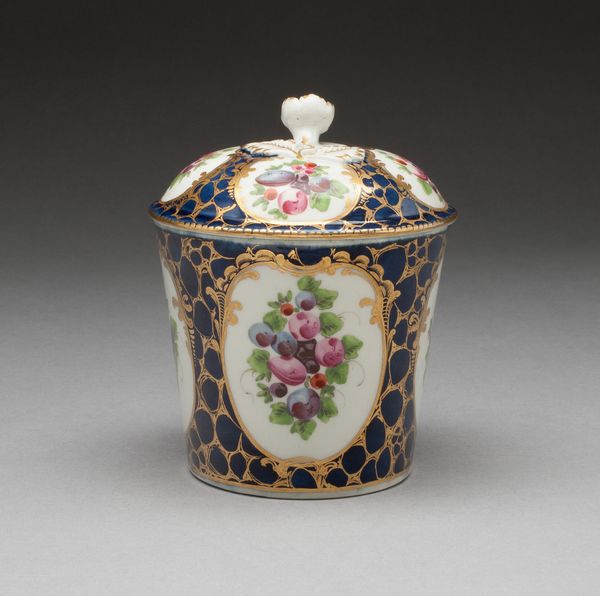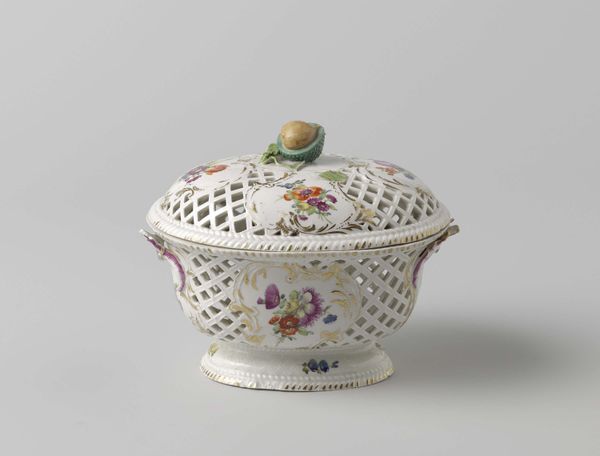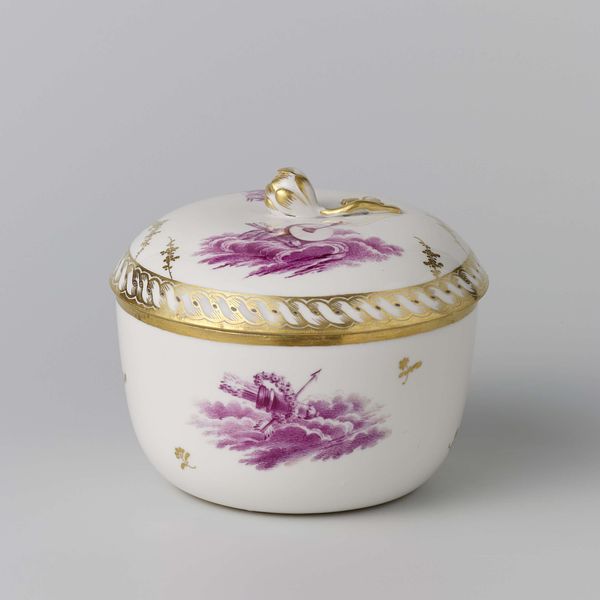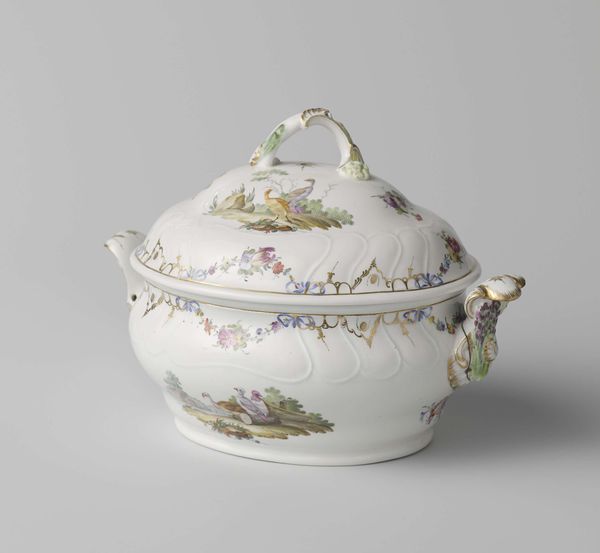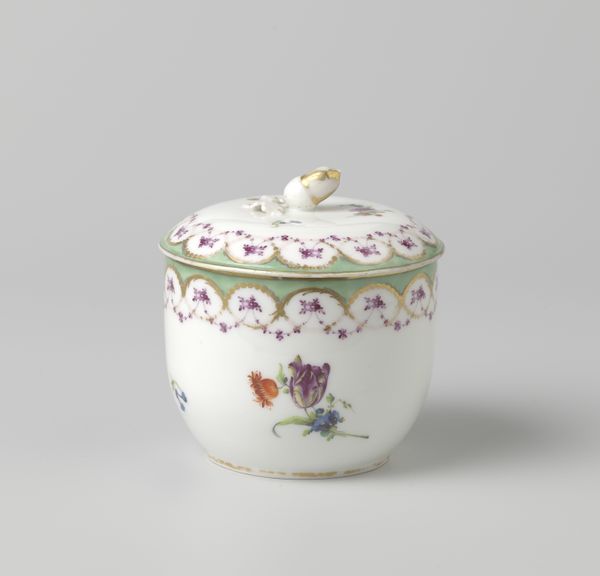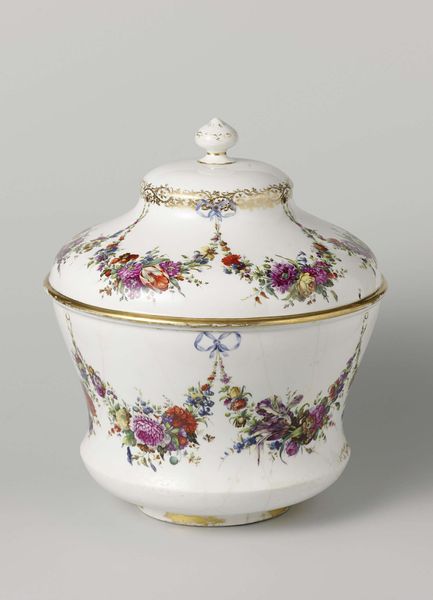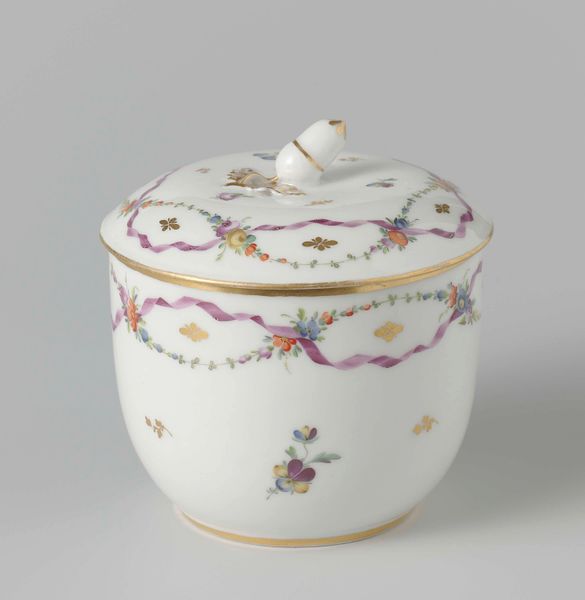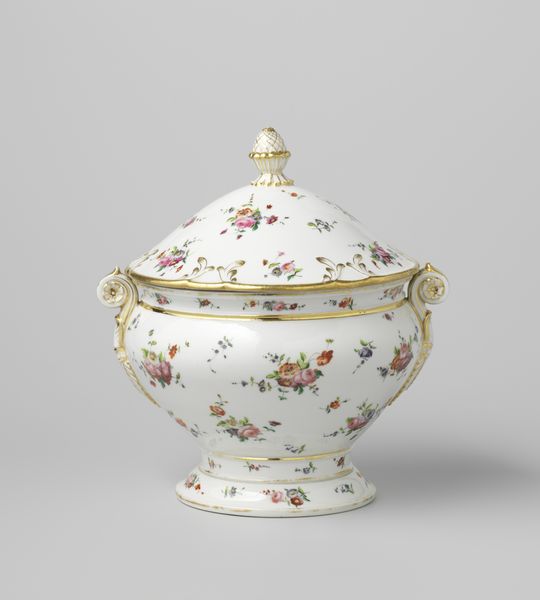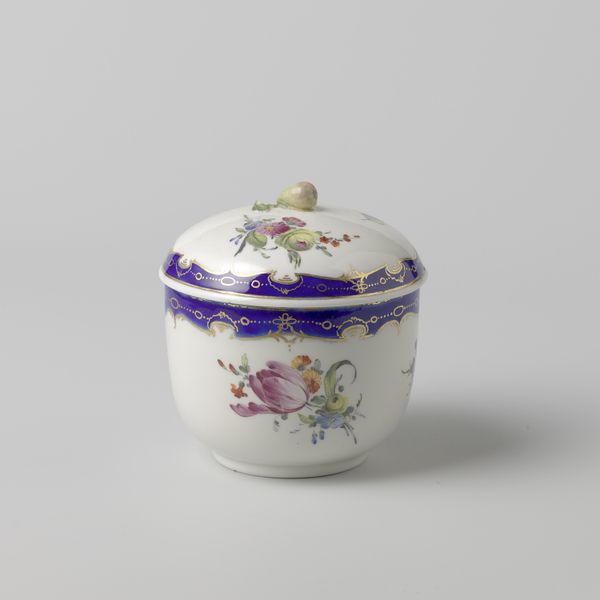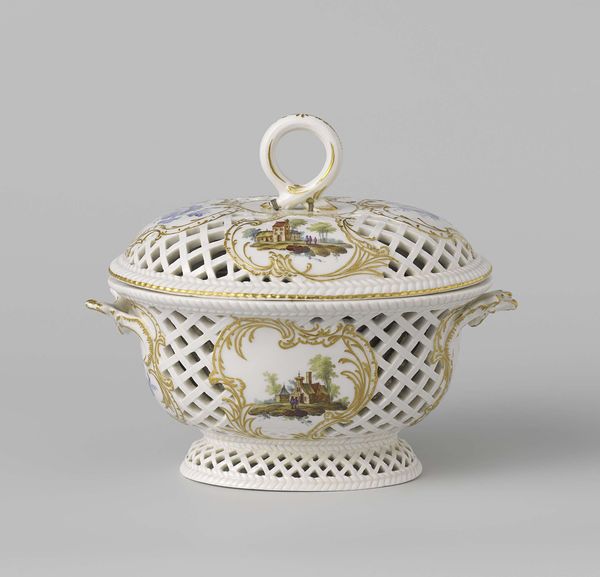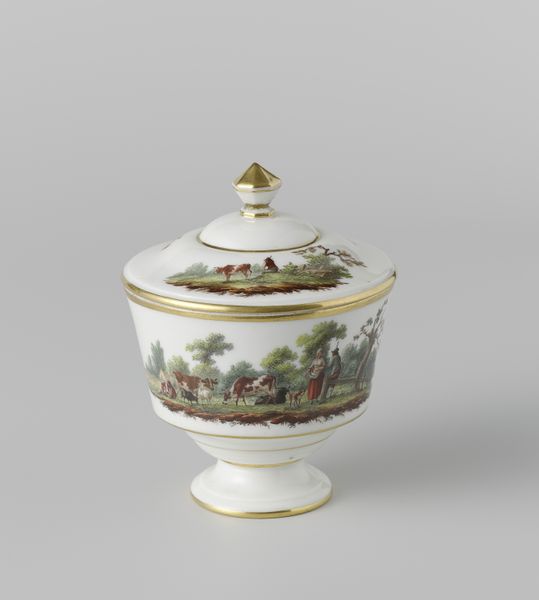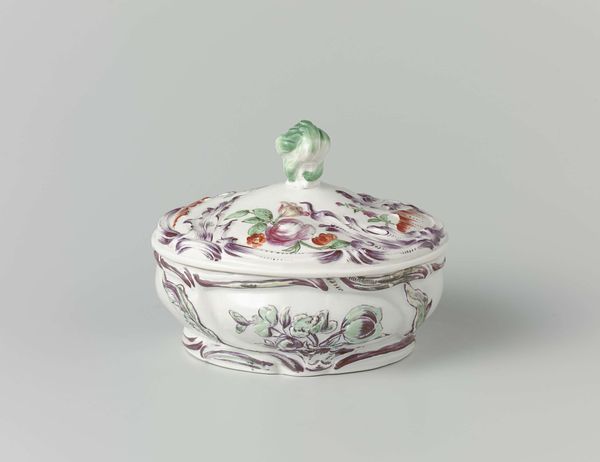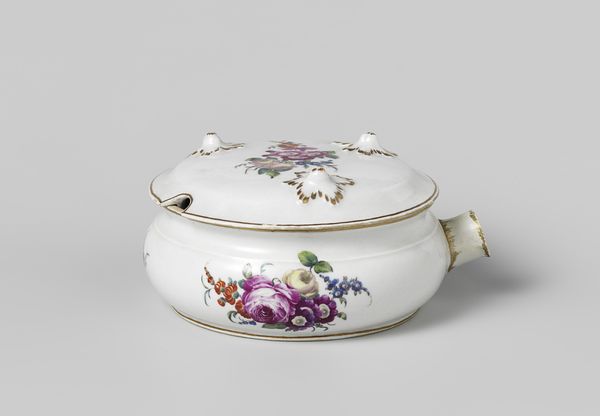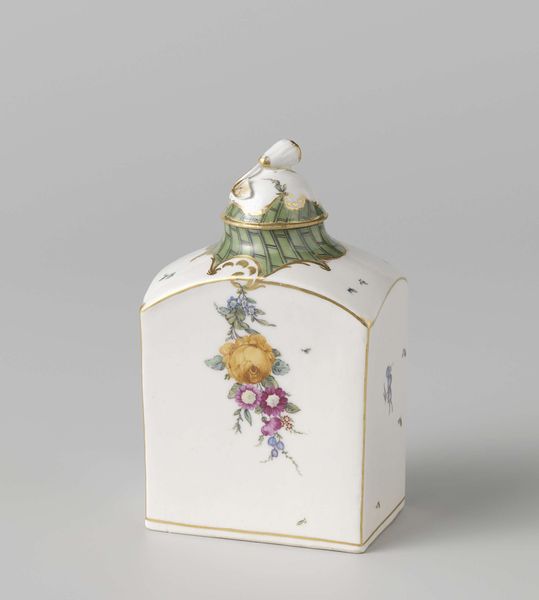
Suikerpot met deksel, beschilderd met bloemen en laddermotief c. 1775 - 1778
0:00
0:00
Dimensions: height 10.9 cm, diameter 9.9 cm
Copyright: Rijks Museum: Open Domain
Curator: What a charming piece! This is a sugar pot with a lid, crafted from porcelain in Loosdrecht, dating back to about 1775-1778. You can see it here at the Rijksmuseum. Editor: My first impression is of delicacy and restrained opulence. The creamy white porcelain provides the perfect canvas for the Rococo floral decorations, it’s a wonderful combination of smooth surfaces and ornate design. Curator: Indeed. Loosdrecht porcelain holds a significant place in Dutch history, being among the earliest successful attempts to produce high-quality porcelain domestically. The manufactory, though short-lived, catered to a wealthy clientele eager to embrace luxury goods, which speaks volumes about the evolving consumer culture in the Netherlands at the time. Editor: The repeating ladder pattern is such a dominant aspect of this piece, acting almost like a verdant fence against the floral arrangement on the side and top. Note how the artisan juxtaposes the controlled geometry of the latticework with the free-flowing naturalism of the roses. Curator: Precisely. Floral motifs were incredibly fashionable during that era, symbolizing wealth, leisure, and refinement. Owning such an item showcased one’s taste and social standing. It’s also interesting to consider the cultural exchange involved – the secrets of porcelain production arrived in Europe from China and gradually Western artisans put their spin on it. Editor: I agree, and observe how the gold detailing elevates the design. It’s carefully used to trace the edges, enhancing definition and acting as a sort of frame to draw attention to the central composition, a visual focus reinforced by the three-dimensional floral cluster on the lid. Curator: Considering how the Loosdrecht factory was run by a clergyman, it also points to how the church also held significant financial powers in the country and was willing to participate in growing the capitalistic tendencies of the 18th century through these enterprises. Editor: Thinking about the object's function, one realizes how a simple container transforms into a vessel of status and a statement of refined living through visual and material culture. Curator: Ultimately, studying an artifact like this brings together so many social, economic, and political factors within this period. Editor: Yes, and it also invites us to examine the artistic decisions that speak to both innovation and the aesthetic principles that defined the era.
Comments
No comments
Be the first to comment and join the conversation on the ultimate creative platform.
